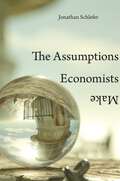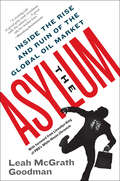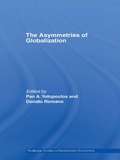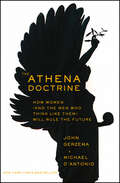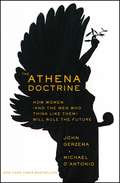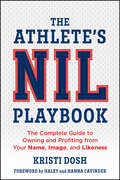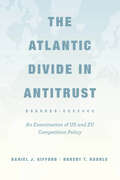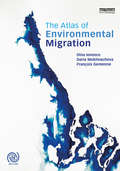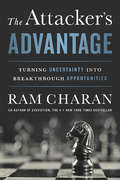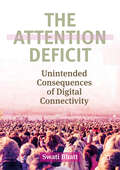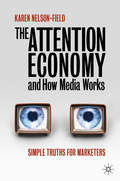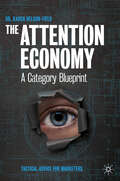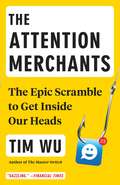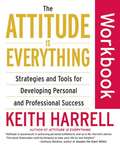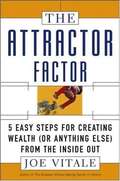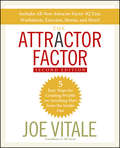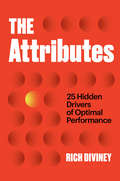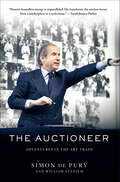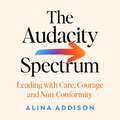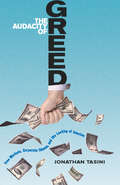- Table View
- List View
The Assumptions Economists Make
by Jonathan SchleferEconomists make confident assertions in op-ed columns and on cable newsâso why are their explanations often at odds with equally confident assertions from other economists? And why are all economic predictions so rarely borne out? Harnessing his frustration with these contradictions, Jonathan Schlefer set out to investigate how economists arrive at their opinions. While economists cloak their views in the aura of science, what they actually do is make assumptions about the world, use those assumptions to build imaginary economies (known as models), and from those models generate conclusions. Their models can be useful or dangerous, and it is surprisingly difficult to tell which is which. Schlefer arms us with an understanding of rival assumptions and models reaching back to Adam Smith and forward to cutting-edge theorists today. Although abstract, mathematical thinking characterizes economistsâ work, Schlefer reminds us that economists are unavoidably human. They fall prey to fads and enthusiasms and subscribe to ideologies that shape their assumptions, sometimes in problematic ways. Schlefer takes up current controversies such as income inequality and the financial crisis, for which he holds economists in large part accountable. Although theorists won international acclaim for creating models that demonstrated the inherent instability of markets, ostensibly practical economists ignored those accepted theories and instead relied on their blind faith in the invisible hand of unregulated enterprise. Schlefer explains how the politics of economics allowed them to do so. The Assumptions Economists Make renders the behavior of economists much more comprehensible, if not less irrational.
The Asylum: Inside the Rise and Ruin of the Global Oil Market
by Leah McGrath Goodman“Hookers, Cristal, and the rise and fall of the New York Mercantile Exchange . . . A riveting tale of greed gone mad . . . A great ride for market fans.” —Bloomberg BusinessweekThe Asylum is a stunning exposé by a seasoned Wall Street journalist that once and for all reveals the truth behind America’s oil addiction in all its unscripted and dysfunctional glory.In the tradition of Too Big to Fail and Liar’s Poker, author Leah McGrath Goodman tells the amazing-but-true story of a band of struggling, hardscrabble traders who, after enduring decades of scorn from New York’s stuffy financial establishment, overcame more than a century of failure, infighting, and brinksmanship to build the world’s reigning oil empire—entirely by accident.“An inside look at how an underdog crew of uneducated, street-smart New York traders brawled and yelled, drank and drugged their way to control the world’s oil markets.” —Fortune“Goodman explores the lurid culture of NYMEX traders, scruffy hustlers who shriek and swear and pummel each other over deals, and bring guns, drugs, and hookers right into the trading pit . . . one of the year’s most colorful business histories.” —Publishers Weekly“Traders are crude, says The Asylum . . . And yet this band of outsiders had more control than OPEC and the large Houston energy firms.” —New York Post“A seriously informative and amusing look into the oil trading pits.” —Huffington Post“In the complex world of the energy markets where pit trading is a blue-collar profession, Goodman captures the grit and spirit of the floor and the personalities in the board room . . . Her depiction of the players and the place ring true.” —Reuters
The Asymmetries of Globalization (Routledge Studies in Development Economics)
by Pan A. Yotopoulos Donato RomanoThe discourse on globalization has become polarized. Proponents consider globalization as the silver bullet for targeting growth in the world economy and for poor countries specifically, while opponents see it as the poisoned arrow of exploitation and impoverishment of the Third World. Splendidly edited, The Asymmetries of Globalization deals with the 'what' and 'how' but primarily with 'why' globalization has most often negative outcomes for developing countries. It breaks new ground in approaching globalization not only as trade commodities, but also as trade in positional goods ('decommodified trade.') The two novel and munificent forms of post-Ricardian decommodified trade, trade in services and trade in hard currency in the form of currency substitution, are sculpted in the introductory chapter as the foundation of the systematic asymmetries of globalization. The analytical approach of introducing 'positional goods' in the form of decommodified trade, in the discource on globalization, is original. It is also timely in a situation where the tail of trade in 'services' has grown enough to wag the traditional trade-in-commodities dog of globalization. The balance of the chapters in this volume constitute a tapestry of case studies that elaborate and empirically investigate the causes of systematic asymmetries of globalization. The book's appeal transcends economics to make it also highly useful to students across the disciplines of sociology and political science, especially in the fields of international political economy and the politics of international trade. It will certainly enlighten all those working in the general areas of globalization, poverty and economic development.
The Atchison Corporation (A)
by Joseph L. BowerA new general manager uses a profit-center-based system to shake up an old line company. He then faces the task of placating a board member upset by the human consequences. A rewritten version of an earlier case.
The Atchison Corporation (B)
by Joseph L. BowerSupplements the (A) case. A rewritten version of an earlier supplement.
The Athena Doctrine
by Michael D'Antonio John GerzemaNew York Times BestsellerHow feminine values can solve our toughest problems and build a more prosperous futureAmong 64,000 people surveyed in thirteen nations, two thirds feel the world would be a better place if men thought more like women. This marks a global trend away from the winner-takes-all, masculine approach to getting things done. Drawing from interviews at innovative organizations in eighteen nations and at Fortune 500 boardrooms, the authors reveal how men and women alike are recognizing significant value in traits commonly associated with women, such as nurturing, cooperation, communication, and sharing. The Athena Doctrine shows why femininity is the operating system of 21st century prosperity.Advocates a new way to solve today's toughest problems in business, education, government, and moreBased on a landmark survey and results from Young & Rubicam's respected Brand Asset Valuator's global survey, as well as on-the-ground interviews in 18 countriesFrom acclaimed social theorist, consumer expert, and bestselling author, John Gerzema, and award-winning author, Michael D'AntonioBrought to life through real world examples and backed by rigorous data,The Athena Doctrine shows how feminine traits are ascending--and bringing success to people and organizations around the world. By nurturing, listening, collaborating and sharing, women and men are solving problems, finding profits, and redefining success in every realm.
The Athena Doctrine: How Women (and the Men who Think Like Them) will Rule the Future
by Michael D’antonio John GerzemaBrought to life through real world examples and backed by rigorous data, The Athena Doctrine shows how feminine traits are ascending--and bringing success to people and organizations around the world.
The Athlete's NIL Playbook: The Complete Guide to Owning and Profiting from Your Name, Image, and Likeness
by Kristi DoshThe definitive guide for athletes to understand and earn from name, image, and likeness (NIL) rights The first comprehensive guide designed to help college, high school, and youth athletes navigate the name, image, and likeness (NIL) rights they've gained since 2021, The Athlete's NIL Playbook walks readers through NIL rules, opportunities, and red flags, showing them how to build a personal brand, find deals, reach out to companies, and negotiate terms. Along with real-life examples, exercises, and pitch templates, this book includes case studies from college and high school athletes who have successfully navigated this burgeoning market: the Cavinder Twins, Olivia Dunne, Travis Hunter, Chase Griffin, Emily Cole, and many more. Written by Kristi Dosh, a seasoned sports business reporter and founder of a nationally-recognized news platform covering the business of college sports, this book covers aspects of NIL including: The types of opportunities available (social media marketing, lessons, camps/clinics, merchandise, personal appearances, and more) Whether you need an agent or not, and how to find the right one if you do Working with third parties like collectives and marketplaces and protecting/registering your own intellectual property A true playbook for leveraging and capitalizing on NIL monetization opportunities, The Athlete's NIL Playbook is an essential read for athletes and parents seeking to ensure athletic success is matched with lucrative financial and career opportunities that can go far beyond graduation.
The Atlantic Divide in Antitrust: An Examination of US and EU Competition Policy
by Daniel J. Gifford Robert T. KudrleHow is it that two broadly similar systems of competition law have reached different results across a number of significant antitrust issues? While the United States and the European Union share a commitment to maintaining competition in the marketplace and employ similar concepts and legal language in making antitrust decisions, differences in social values, political institutions, and legal precedent have inhibited close convergence. aaaaaaaaaaa With "The Atlantic Divide in Antitrust, " Daniel J. Gifford and Robert T. Kudrle explore many of the main contested areas of contemporary antitrust, including mergers, price discrimination, predatory pricing, and intellectual property. After identifying how prevailing analyses differ across these areas, they then examine the policy ramifications. Several themes run throughout the book, including differences in the amount of discretion firms have in dealing with purchasers, the weight given to the welfare of various market participants, and whether competition tends to be viewed as an efficiency-generating process or as rivalry. The authors conclude with forecasts and suggestions for how greater compatibility might ultimately be attained. "
The Atlas of Environmental Migration
by François Gemenne Dina Ionesco Daria MokhnachevaAs climate change and extreme weather events increasingly threaten traditional landscapes and livelihoods of entire communities the need to study its impact on human migration and population displacement has never been greater. The Atlas of Environmental Migration is the first illustrated publication mapping this complex phenomenon. It clarifies terminology and concepts, draws a typology of migration related to environment and climate change, describes the multiple factors at play, explains the challenges, and highlights the opportunities related to this phenomenon. Through elaborate maps, diagrams, illustrations, case studies from all over the world based on the most updated international research findings, the Atlas guides the reader from the roots of environmental migration through to governance. In addition to the primary audience of students and scholars of environment studies, climate change, geography and migration it will also be of interest to researchers and students in politics, economics and international relations departments.
The Atlas of Health Inequalities in Japan (Global Perspectives on Health Geography)
by Tomoki Nakaya Yuri ItoThis new health atlas of Japan presents a series of maps about the health of the contemporary Japanese population, i.e. detailed maps of health indicators in small areas using cartograms. This is the first comprehensive small-area based health atlas about contemporary Japan using vital statistics from 1995-2014. Each map is supplemented with concise explanations written by leading epidemiologists and health geographers in Japan. The book employs various cutting-edge methods in spatial epidemiology, Bayesian spatial smoothing for the reliable mapping of mortality indices, advanced cartographic transformations using the concept of aerial cartograms, and summary statistics of socioeconomic health inequalities. The atlas highlights geographical aspects of social gradients in health by comparing mortality maps with distribution of deprivation index during the recent long-lasting economic stagnation period of Japan known as the lost decades. This health atlas will be a useful resource for international comparisons between Japan and other advanced countries in terms of health and related socioeconomic disparities between regions. It will be of interest to public health practitioners, administrators, researchers and students working on health geography and public health.
The Attacker's Advantage: Turning Uncertainty into Breakthrough Opportunities
by Ram CharanThe phenomenon of uncertainty is not new; what is new is its intensity and potential to change industries and destroy companies. Business leaders can be on the defensive, or they can be on offense, prepared to lead decisively. The ability to deal with uncertainty is perhaps the paramount skill leaders must have to be successful in this era. Without it they risk becoming personally obsolete and driving their companies off a cliff. In The Attacker's Advantage, renowned business expert and bestselling author Ram Charan shows what skills are needed to be able to spot the disruption that is coming, and what actions are necessary to take advantage of these changes. While many leaders know how to cope with operational uncertainty--when, for example, revenue fluctuates--the same cannot be said for dealing with structural uncertainty that can alter the money-making patterns of a company, industry or entire economic sector. Charan demonstrates the huge upside offered by structural uncertainty and provides the concepts and tools--such as being able to spot the catalysts of disruption, building organizational preparedness, developing a financial understanding of the consequences--to take advantage of forces that are creating new customer needs, market segments and ways to make money. Uncertainty is now ubiquitous. The sources of structural change are so varied and fast moving, and their convergence so unpredictable. Digitization and the integration of technologies through software and hardware has already impacted many businesses, but much more is to come. With his unparalleled ability to cut through complexity and provide workable solutions, Ram Charan provides his readers with the ability to anticipate and deal with the biggest threats facing their business.
The Attention Deficit: Unintended Consequences of Digital Connectivity
by Swati BhattDigital technology has enabled connectivity on an unimagined scale. Human beings are social animals and economic activity promotes this socialization. Market transactions are based on optimism about the future, faith that the world is good and trust that growth is organic or coming from within the system. Individuals therefore invest in the future by having children, by extending credit and accepting risk, and by building connections with others in the sincere expectation of this connectivity being reciprocated. This book explores the unintended consequences of ubiquitous connectivity. The first effect is captured by the sharing model. Technology offers multiple avenues for sharing experiences and personal information, so active engagement with this increased content uses mental effort. Connection inevitably leads to comparisons with other groups and individuals, so despite the benefits of affirmation and group inclusion, these links corrode social networks, leading to depression and mental apathy. The second effect--the result of the commercialization of sharing--is encapsulated in the attention deficit model. Loss of self-worth, driven by the first effect, encourages further connectivity and sharing as buyers seek more comfort and reassurance via social media, paying with time and personal information. The product is digital content and the payment is with time and data. Correspondingly, social media fulfills this demand with exuberance, both via user-generated content and commercially curated content. We are overwhelmed with even more information, paying with increasingly scarce time and attention. Finally, the third and most consequential effect is diminished risk taking. Attention scarcity, as a consequence of the content tsunami, throttles cognitive effort, impairing judgment and decision-making. So the safe bet may be to do nothing . . . take no risks and no gambles. Weaving together the latest research on economics, psychology, and neuroscience, this book fills a void for readers wanting a smart, clear analysis of communications markets and the commercialization of Internet-inspired connectivity.
The Attention Economy and How Media Works: Simple Truths for Marketers
by Karen Nelson-FieldThis book offers a considered voice on the advertising chaos that colours our rapidly changing media environment in a world of fake news, fast facts and seriously depleted attention stamina. Rather than simply herald disruption, Karen Nelson-Field starts an intelligent conversation on what it will take for businesses to win in an attention economy, the advertising myths we need to leave behind and the scientific evidence we can use to navigate a complex advertising and media ecosystem. This book makes sense of viewability standards, coverage and clutter; it talks about the real quality behind a qCPM and takes a deep dive into the relationship between attention and sales. It explains the stark reality of human attention processing in advertising. Readers will learn how to maximise a viewer’s divided attention by leveraging specific media attributes and using attention-grabbing creative triggers. Nelson-Field asks you to pay attention to a disrupted advertising future without panic, but rather with a keen eye on the things that brand owners can learn to control.
The Attention Economy: A Category Blueprint
by Karen Nelson-FieldIn this compelling sequel, The Attention Economy: A Category Blueprint, takes an in-depth look into the dynamic world of marketing and advertising, unveiling the pivotal role that human attention measurement plays in the present and future landscape. Designed for industry professionals, this book serves as a blueprint, offering profound insights and actionable advice.The book begins by reflecting on the whirlwind of transformations that have shaped the marketing landscape over the past three decades. It then examines the perfect storm of events that has propelled attention economics to the forefront of the industry's agenda. Throughout its chapters, the book catalogs cutting-edge research and tackles critical issues such as attention measurement, metrics, prediction, distraction, data quality and the ethical use of attention data ultimately piecing together the intricate puzzle and offering clarity for industry professionals.Industry leaders and early adopters contribute their insights, offering valuable perspectives on their own experiences and practical applications of attention data.The book’s engaging style blends quick tips, simple explanations of complex concepts and humorous anecdotes to make the content accessible and enjoyable. By blending storytelling and practical advice, the book succeeds in demystifying the intricate world of attention economics.This book is a must-read for marketing professionals seeking to understand the evolving landscape of advertising. It offers a blueprint for change and foresight into the future of the attention economy. In doing so, it becomes an invaluable resource for anyone navigating the challenges and opportunities of today's marketing world.
The Attention Merchants: The Epic Scramble to Get Inside Our Heads
by Tim WuFrom Tim Wu, author of the award-winning The Master Switch and who coined the phrase "net neutrality"--a revelatory look at the rise of "attention harvesting," and its transformative effect on our society and our selves. Attention merchant: an industrial-scale harvester of human attention. A firm whose business model is the mass capture of attention for resale to advertisers.In nearly every moment of our waking lives, we face a barrage of advertising enticements, branding efforts, sponsored social media, commercials and other efforts to harvest our attention. Over the last century, few times or spaces have remained uncultivated by the "attention merchants," contributing to the distracted, unfocused tenor of our times. Tim Wu argues that this is not simply the byproduct of recent inventions but the end result of more than a century's growth and expansion in the industries that feed on human attention. From the pre-Madison Avenue birth of advertising to TV's golden age to our present age of radically individualized choices, the business model of "attention merchants" has always been the same. He describes the revolts that have risen against these relentless attempts to influence our consumption, from the remote control to FDA regulations to Apple's ad-blocking OS. But he makes clear that attention merchants grow ever-new heads, and their means of harvesting our attention have given rise to the defining industries of our time, changing our nature--cognitive, social, and otherwise--in ways unimaginable even a generation ago.From the Hardcover edition.
The Attitude Is Everything Workbook
by Keith HarrellIn this companion to Attitude Is Everything, mega-successful motivational speaker Keith Harrell gives you practicall, step-by-step guidance on putting a good attitude to work in order to get ahead in life. Keith Harrell has taken his place among the motivational greats of the world. Regularly inspiring Fortune 500 companies with a 100 percent satisfaction rate, his message is simple yet powerful: attitude, whether positive or negative, has the power to impact on an organization's or individual's success. Based on his successful Attitude Is Everything, this workbook is the essential ?w-to?uide to transforming Harrell's strategies into success. In a series of clear step-by-step exercises and instructions, Harrell teaches readers techniques for maintaining a powerful positive attitude in order to get ahead in life.
The Attractor Factor
by Joe VitaleJoe Vitale is a well-known and widely respected internet marketer with both experience and results to back up the ideas in this book. He teaches readers how to apply both spiritual practices and common sense to building a business, creating wealth, or reaching other important goals. This is a must-read for anyone who wants to start a business, especially an online business.
The Attractor Factor: 5 Easy Steps for Creating Wealth (or Anything Else) From the Inside Out
by Joe VitaleDiscover the secret to lifelong wealth and happiness!Now in an expanded paperback second edition that includes an Attractor Factor IQ test, exercises for putting lessons into practice, new stories, and more, Dr. Joe Vitale presents his even more powerful and effective five-step plan for attracting wealth, happiness, and success to your life."Whatever you want to attract to your life, Joe Vitale has the secret to make it happen. I highly recommend you get this book and get started today."-Morris Goodman, author of The Miracle Man"I got enough by the end of chapter one to create a major energy shift in my life! Joe's easy, direct, and knowledgeable presentation allowed me to embrace important principles effortlessly."-Dee Wallace, actress and star of E.T.: The Extra-Terrestrial"Joe Vitale not only appeared in The Secret, he is one of the few who knows and lives attraction! Contained in the five steps that Joe maps out in The Attractor Factor are the keys to endless abundance. This book instructs on how to take control of your beliefs and focus, ultimately attracting the life of your dreams. If you just do what Joe tells you, you will create an abundance far beyond what you can currently imagine. The Attractor Factor is the secret that The Secret doesn't tell you."-David Schirmer, wealth coach and star of The Secret"Just when you think you understand how the world works, Joe Vitale comes along and takes you to a whole new place. He's engaging, entertaining, enlightening, and, oh boy, does he ever stretch your thinking."-Ian Percy, registered psychiatrist and member of the U.S. and Canadian public speakers halls of fame"This book has the potential to change humanity."-Dr. Rick Barrett, author of Healed by Morning
The Attributes: 25 Hidden Drivers of Optimal Performance
by Rich DivineyDo you have what it takes to succeed in any situation? According to a retired commander who ran training for Navy SEALs, true optimal performance goes beyond just skill. It&’s all about THE ATTRIBUTES.&“Diviney&’s incredible book explains why some people thrive—even when things get hard.&”—Charles Duhigg, New York Times bestselling author of The Power of HabitDuring his twenty years as a Navy officer and SEAL, Rich Diviney was intimately involved in a specialized SEAL selection process, which whittled a group of hundreds of extraordinary candidates down to a handful of the most elite performers. Diviney was often surprised by which candidates washed out and which succeeded. Some could have all the right skills and still fail, while others he might have initially dismissed would prove to be top performers. The seemingly objective criteria weren&’t telling him what he most needed to know: Who would succeed in one of the world&’s toughest military assignments?It is similarly hard to predict success in the real world. It happens often enough that underdog students accomplish exceptional achievements while highly skilled, motivated employees fail to meet expectations. Dark-horse companies pull away from the pack while dream teams flush with talent and capital go under. In working with and selecting top special operators for decades, Diviney saw that beneath obvious skills are hidden drivers of performance, surprising core attributes—including cunning, adaptability, courage, even narcissism—that determine how resilient or perseverant we are, how situationally aware and how conscientious. These attributes explain how we perform as individuals and as part of a team. The same methodology that Diviney used in the military can be applied by anyone in their personal and professional lives, and understanding these attributes can allow readers and their teams to perform optimally, at any time, in any situation.Diviney defines the core attributes in fresh and practical ways and shares stories from the military, business, sports, relationships, and even parenting to show how understanding your own attributes and those of the people around you can create optimal performance in all areas of your life.
The Auctioneer: Adventures in the Art Trade
by William Stadiem Simon de PuryJust as William Goldman, the ultimate screenwriter, took us inside Hollywood, Simon de Pury, the ultimate art player, will take us inside an even more secretive business, whose staggering prices, famous collectors, and high crimes are front page news almost every day. The former Chairman of Sotheby's Europe, the former owner of Sotheby's rival Phillips de Pury, and currently a London-based dealer and advisor to great collectors around the world, Simon has one of the highest profiles of any non-artist in the art world. Even though he has an ancient title and the aura of an elegant Swiss banker, Simon is famous as an iconoclast and is known as "The Mick Jagger of Auctions" for his showmanship and exuberance. His whole life in art has been devoted to bringing art to the public and to the juxtaposition of high and low. Movie stars, musicians, and athletes compete with hedge funders and billionaires for the great art, and Simon is their pied piper; he wants to turn the world onto art and this book will be his message.
The Audacity Spectrum: Leading with Care, Courage and Non-Conformity
by Alina AddisonLeadership takes courage. Bold action, inspiring vision and authenticity require exceptional courage. Yet so often we play it safe, striving to fit in rather than stand out. What if we stopped fearing risk, and started talking about care instead? Each of us cares so deeply about something - whether a goal, person or belief - that courage comes easily.This is at the heart of audacious leadership. This book is a transformational guide to finding the care, courage and audacity to bring your full self to your work and life. In this powerful new vision, Alina Addison - a pioneering corporate leader, Emotional Intelligence expert coach, and mother to a son on the autism spectrum - combines personal experience with deep research to present the eight fundamental principles of audacious leadership. Filled with practical tools and unique insight, this book will help readers tap into what it is that sets them apart, how to inspire others and dare to create the lives and careers they truly desire.
The Audacity of Greed
by Jonathan TasiniOver the past quarter century, we have lived through the greatest looting of wealth in human history. While billions of dollars streamed into the pockets of a few elites in the corporate and economic class, the vast majority of citizens have lived through a period of falling wages, disappearing pensions, and dwindling bank accounts--all of which lead to the personal debt crisis that lies at the root of the current financial meltdown. This "audacity of greed" was legally blessed by the ethos of the "free market," a phony marketing phrase that covered up the fleecing of the American public.In The Audacity of Greed, Jonathan Tasini examines the reasons and exposes the people responsible for the looting of America--from Wall Street executives who funded their lavish lifestyles at the public's expense to the politicians who let it happen--arguing that we need a cultural and philosophical revolution that punctures the fable of market fundamentalism and, by doing so, values the contributions made by ordinary Americans throughout the economy.Jonathan Tasini is executive director of the Labor Research Association. The longtime president of the National Writers Union, he was the lead plaintiff in Tasini vs. The New York Times, the landmark electronic rights case that took on the corporate media's assault on the rights of freelance authors. In 2006 he ran against Hillary Clinton for the Democratic nomination for the US Senate in New York. He has written about labor and economics for a variety of publications including The New York Times Magazine, The Washington Post, Los Angeles Times, and The Wall Street Journal, and has appeared on CNBC and Fox News.
